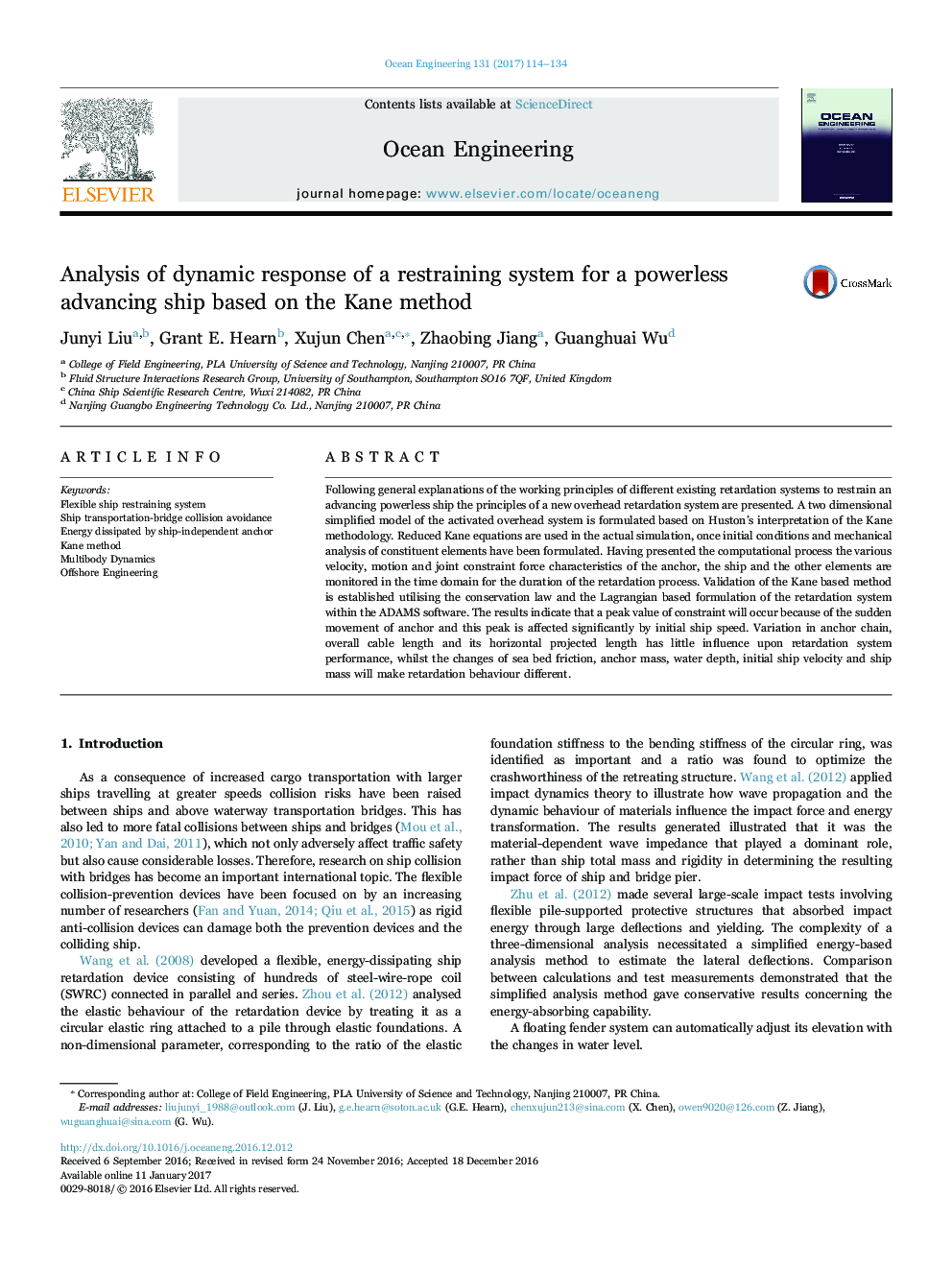| Article ID | Journal | Published Year | Pages | File Type |
|---|---|---|---|---|
| 5474532 | Ocean Engineering | 2017 | 21 Pages |
Abstract
Following general explanations of the working principles of different existing retardation systems to restrain an advancing powerless ship the principles of a new overhead retardation system are presented. A two dimensional simplified model of the activated overhead system is formulated based on Huston's interpretation of the Kane methodology. Reduced Kane equations are used in the actual simulation, once initial conditions and mechanical analysis of constituent elements have been formulated. Having presented the computational process the various velocity, motion and joint constraint force characteristics of the anchor, the ship and the other elements are monitored in the time domain for the duration of the retardation process. Validation of the Kane based method is established utilising the conservation law and the Lagrangian based formulation of the retardation system within the ADAMS software. The results indicate that a peak value of constraint will occur because of the sudden movement of anchor and this peak is affected significantly by initial ship speed. Variation in anchor chain, overall cable length and its horizontal projected length has little influence upon retardation system performance, whilst the changes of sea bed friction, anchor mass, water depth, initial ship velocity and ship mass will make retardation behaviour different.
Related Topics
Physical Sciences and Engineering
Engineering
Ocean Engineering
Authors
Junyi Liu, Grant E. Hearn, Xujun Chen, Zhaobing Jiang, Guanghuai Wu,
